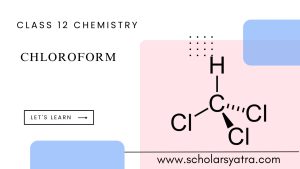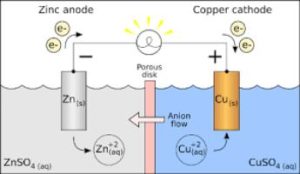Introduction to Silver (Ag)
Silver is a member of Group IB of the periodic table, which includes copper, silver, and gold. In its chemical reactions, silver resembles copper in some respects and gold in others. The principal oxidation state of silver is +1, and its stable ion in natural aqueous environments is Ag+. The naturally occurring isotopes of the element are Ag107 and Ag109. Silver occurs in the native state, as a constituent of various natural alloys and minerals combined with sulphur, antimony, arsenic, tellurium, and selenium. The element also forms several halides and a basic sulphate in nature. The principal silver minerals are native silver, argentite, acanthite, argentian tetrahedrite, tennantite, proustite, pyrargyrite, chlorargyrite, and argentojarosite.
Table of Contents
ToggleThe information about silver is given below:
- Atomic Structure:
- Silver is a chemical element with the symbol Ag (from the Latin word “Argentum”) and atomic number 47.
- It is a transition metal and belongs to Group 11 of the periodic table.
- Electron Configuration: [Kr] 4d¹⁰5s¹
- Silver has 47 protons in its nucleus, and the number of neutrons in its isotopes varies.
- Occurrence:
- Silver is a relatively rare metal, often found in nature in its elemental form (native silver) or in ores such as argentite (Ag₂S), chlorargyrite (AgCl), and other mixed sulfide ores.
- Commonly found alongside ores of lead, copper, and gold.
Physical Properties of Silver
- Color and Luster: Silver is known for its lustrous white metallic appearance.
- Conductivity:
- The best conductor of electricity and heat among all elements, surpassing copper.
- Used extensively in electrical and electronic applications for this reason.
- Malleability and Ductility: It is very malleable and ductile, meaning it can be hammered into thin sheets (malleable) or drawn into thin wires (ductile) without breaking.
- Density: 10.49 g/cm³ at room temperature.
- Melting and Boiling Points:
- Melting point: 961.78°C (1763.2°F)
- Boiling point: 2162°C (3924°F)
Chemical Properties of Silver
- Oxidation States: Silver typically exhibits an oxidation state of +1 (Ag⁺) in its compounds, although it can occasionally be found in the +2 and +3 oxidation states in more complex chemistry.
- Reactivity:
- Silver is relatively unreactive compared to other transition metals.
- It does not react with oxygen at room temperature, so it doesn’t tarnish easily in pure air. However, it reacts with sulfur compounds in the air, forming silver sulfide (Ag₂S), which causes tarnishing.
- Reaction with Acids:
- Silver does not react with dilute acids, but it dissolves in nitric acid (HNO₃) to form silver nitrate (AgNO₃) and nitrogen oxides.
- Reaction:3Ag+4HNO3→3AgNO3+2H2O+NO
- It can also dissolve in concentrated sulfuric acid to form silver sulfate.
- Silver does not react with dilute acids, but it dissolves in nitric acid (HNO₃) to form silver nitrate (AgNO₃) and nitrogen oxides.
- Reaction with Halogens:
- Silver reacts with halogens (like chlorine, bromine, and iodine) to form silver halides (AgX, where X = Cl, Br, I).
- Silver chloride (AgCl), bromide (AgBr), and iodide (AgI) are important in photography due to their light sensitivity.
Extraction of silver
Extraction from argentine (Ag2S).
- Concentration: at first, the ore is crushed into fine pieces and then powdered into ball mills. The concentrated ore is then set for the froth flotation method.
- Cyanide formation: the concentrated ore is treated with (0.4 –7)% aqueous sodium cyanide in the presence of air. The reaction is reversible and to make it irreversible Na2S is consumed with the help of air blown.
Ag2S+4NaCN⟶2Na[Ag(CN)2]+Na2S
Na2S+2O2⟶Na2SO4
- Precipitation: the solution obtained above is filtered to remove any insoluble impurities and silver is precipitated by using scrap zinc in the solution.
2Na[Ag(CN)2]+Zn⟶Na[Zn(CN)4]+Ag
The obtained silver is filtered, washed, dried, and heated strongly with borax powder to KNO3 to get a compact bright mass of silver.
- Refining or purification: purification is done by electrolysis method in which impure silver is taken as the anode and pure silver as the cathode in an acidified solution of AgNO3. When current is passed through it, the anode dissolves and the equivalent amount of pure silver is deposited at the cathode leaving impurities behind.
At anode
Ag – e– → Ag+
At cathode
Ag+ + e– → Ag
Isotopes of Silver
- Silver has two stable isotopes:
- Ag-107 (51.839% natural abundance)
- Ag-109 (48.161% natural abundance)
- Radioactive isotopes such as Ag-110m (a metastable isotope) are used in research and medicine.
Silver in History and Culture
- Silver has been known and valued for thousands of years. It was used by ancient civilizations for coins, jewelry, and utensils.
- It is considered a precious metal and has often been used as currency, as well as for decorative purposes.
- The phrase “silver standard” refers to the use of silver as a monetary base, a system used by many countries in the past.
Applications of Silver
-
Industrial Applications:
- Electronics and Electrical Contacts: Due to its high electrical conductivity, silver is used in switches, relays, and other electrical components.
- Solar Panels: Silver paste is used in photovoltaic cells for solar energy generation.
- Mirrors: Silver’s reflectivity makes it useful for making mirrors, especially in high-quality telescopes and other scientific instruments.
-
Chemical and Catalytic Uses:
- Silver acts as a catalyst in some chemical reactions, including the production of formaldehyde from methanol.
-
Medical Uses:
- Silver has antibacterial properties and is used in wound dressings, creams, and coatings to prevent infection.
- Silver nanoparticles are used in medical textiles and personal hygiene products for their antimicrobial activity.
-
Photography:
- Silver halides (AgCl, AgBr, AgI) are light-sensitive compounds used in traditional photographic films. When exposed to light, they decompose to form elemental silver, which creates the image on film.
-
Jewelry and Silverware:
- Silver’s malleability, luster, and resistance to tarnish make it a popular choice for jewelry, cutlery, and decorative objects.
Silver Compounds
- Silver Nitrate (AgNO₃):
- A key silver compound used in photography, staining biological materials, and as a precursor in silver-based reactions.
- It is also used in making other silver salts like silver chloride (AgCl) and silver bromide (AgBr).
- Silver Sulfide (Ag₂S):
- Forms when silver reacts with sulfur or sulfur compounds in the air, leading to tarnish on silver objects.
- Silver Oxide (Ag₂O):
- Used in certain battery technologies (silver-oxide batteries).
Silver and the Environment
- Environmental Impact:
- Silver mining and refining can lead to pollution and environmental degradation if not managed properly.
- Silver nanoparticles, used in various industrial and consumer products, are an emerging concern in terms of their environmental and health impacts due to their potential toxicity in aquatic ecosystems.
- Recycling:
- Silver is highly recyclable, and much of the silver in circulation today is recovered from old electronics, jewelry, and photographic materials.
Health and Safety Considerations
- Toxicity:
- Silver is generally considered non-toxic in small amounts, but excessive exposure, especially to silver compounds or colloidal silver, can cause a condition called argyria, where the skin turns a bluish-gray color.
- Occupational Hazards:
- Workers involved in silver mining, refining, or production of silver compounds must handle it with care to avoid long-term exposure to silver dust or compounds, which may pose health risks.
Conclusion
Silver is a versatile and highly valuable metal with a rich history and an array of modern applications. Its unique combination of physical and chemical properties makes it irreplaceable in industries ranging from electronics to medicine. Although it is rare and precious, silver continues to play a vital role in technological and scientific advancements.
Suggested Questions for Students
- Why is silver considered the best conductor of electricity, and how does this property influence its industrial applications?
- Discuss the importance of silver halides in photography.
- What health risks are associated with prolonged exposure to silver compounds, and how can they be mitigated in industrial settings?







